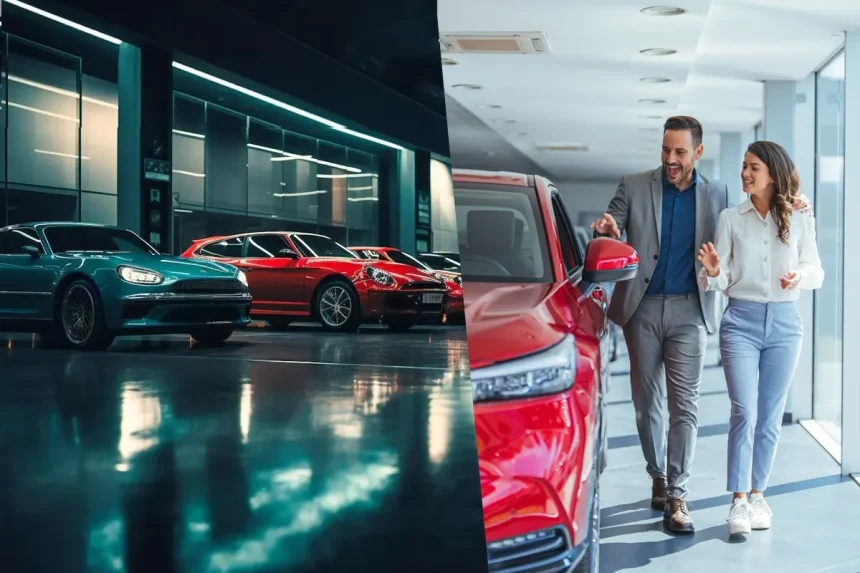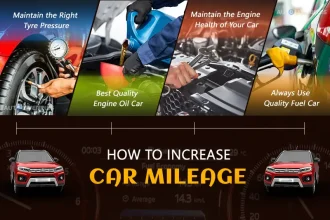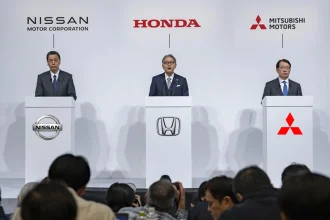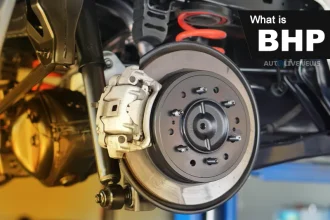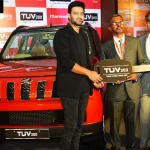Cars and two-wheelers are so essential today that many of us cannot imagine a life without one. Buying a vehicle is one of the most important financial decisions you will make. Owning a car or two-wheeler helps you save time and not rely on public transport. But the pricing in India can sometimes get confusing. If you are in the market for a new vehicle, understanding the ex-showroom vs on-road price is essential before you purchase a new car or bike.
Have you wondered why the price of a car in advertisements is always lower than what you actually end up paying? No, car manufacturers are not lying to you. There are actually two types of prices used in the automobile industry: ex-showroom and on-road. In this blog, we’re breaking down ex-showroom vs on-road price for cars and bikes and listing the components of each one.
Knowing the difference between ex-showroom vs on-road price helps you find a vehicle in your budget and prepares you for the purchasing process. You will be able to find the right car or bike more easily and will know what to expect price-wise.
The Difference Between Ex-Showroom Price And On-Road Price
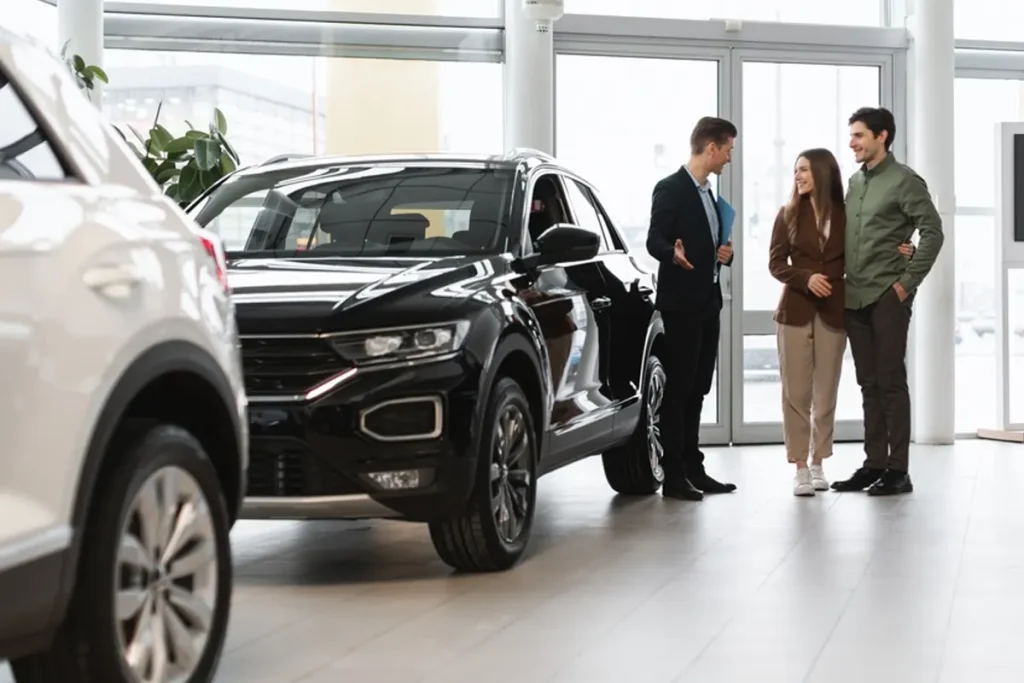
India has some of the highest tax rates on cars in the world. Cars are still considered a luxury commodity and are thus subject to heavy taxation. This means that sometimes the difference between the ex-showroom price vs on-road price can be quite jarring.
Let us look at the difference between the ex-showroom vs on-road price.
| Ex-Showroom Price | On-Road Price |
|---|---|
| The cost to buy just the vehicle | The cost to buy the vehicle and legally drive it |
| Not the final price that the buyer pays | The final price that the buyer pays |
| The ‘sticker price’ at the dealership. Includes: production cost, dealer’s profit margin, GST | The price buyers pay on purchase. Includes: Registration, road tax, insurance, additional accessory costs, green cess, etc. |
| You can negotiate the ex-showroom price | You cannot negotiate on-road price |
| Vehicle insurance is calculated on ex-showroom price | Vehicle loans are given on the on-road price |
| Very little variation in price across states for the same car or bike model | A lot of variation in price across states for the same car or bike model |
| It is always lower than on-road price | It is always higher than ex-showroom price |
What Is The Ex-showroom Price?
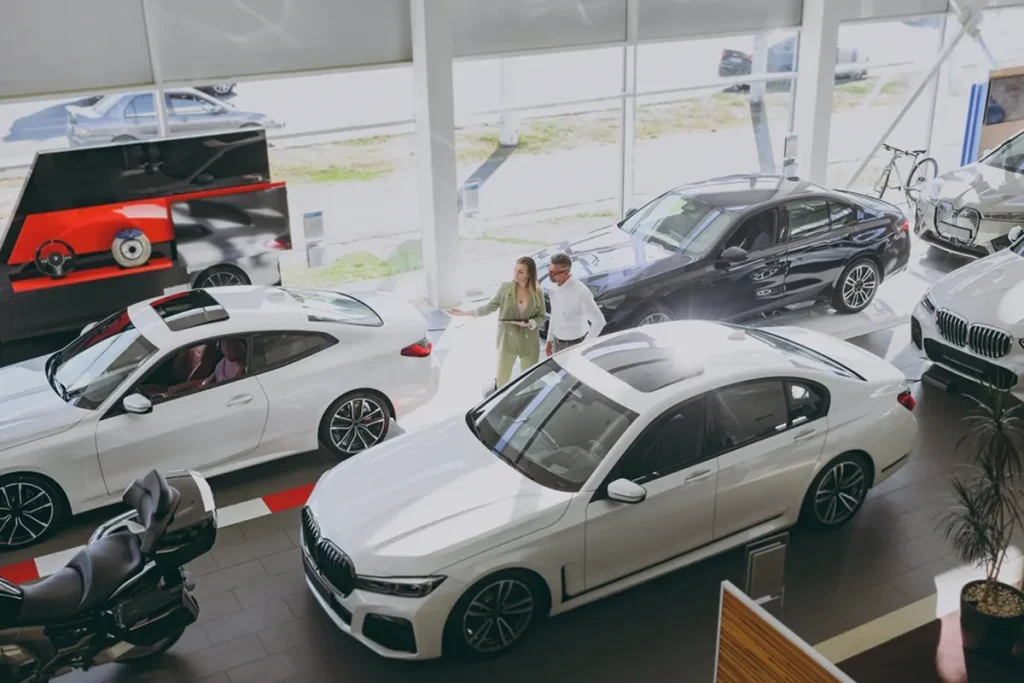
Ex-showroom prices are usually the ones you see in advertisements. The ex-showroom price of a car or bike is the price at which a dealership will sell it to retail customers. However, this price doesn’t include the actual end price of the vehicle.
Confused? The ex-showroom price is set by car manufacturers. It includes production costs, profit margins, state taxes, and other costs such as transportation. The major difference between ex-showroom vs on-road price is that the former does not include charges such as registration charges, insurance, and taxes, which are requirements for you to be able to legally drive your vehicle outside.
So while ex-showroom prices tell you how much a car’s ‘base price’ is, it’s not an accurate measurement of how much you’ll actually end up paying for the car. If you want to know how much you’ll end up shelling out for a brand-new two- or four-wheeler, you’ll need to look up the on-road price for the vehicle.
Ex-showroom prices can change slightly from dealership to dealership and from city to city. This is because of the difference in transportation and logistics costs. Most places will list the ex-showroom price for New Delhi in ads and websites, so make sure to check the price for your city while buying a new car.
What Is On-Road Price?
The on-road price of a car or bike is the price you will actually pay for it. This price includes road tax, registration costs, insurance charges, and all the charges you need to pay to legally drive your vehicle. If you buy any add-ons, like optional accessories, these costs are also included in your on-road price.
To calculate the on-road price for any vehicle, you must add the additional charges to the ex-showroom price. The factors that make up the on-road price are:
1. Road Tax
Everyone needs to pay road tax to use their vehicle on Indian roads. You can’t drive your car or bike on public roads unless you pay road tax. This is a mandatory cost, which is calculated on the ex-showroom price of the vehicle.
The validity of a road tax payment is usually 10-15 years, or the average lifespan of private vehicles in India. Road tax ranges from 2.5% (Himachal Pradesh) to 13% (Karnataka), and the huge disparity between these rates means that on-road prices in different states can be drastically different.
2. Registration Charges
All new car and bike purchases need to be registered at a local RTO office. In most cases, your dealership will handle this for you. Registering your vehicle is also a mandatory requirement in order to legally drive in public. If you request a special numberplate, that cost will also be added to your on-road price.
Both FASTag and High Security Number Plates (HSRP) are mandatory in India. Since each vehicle must have a dedicated FASTag associated with it, you will have to get a new one for your recently purchased vehicle.
3. Green Cess
Green Cess is a mandatory tax on vehicles that use petrol or diesel. The rate of taxation depends on the engine and usage of the vehicle and is calculated on the ex-showroom price. Levying green cess discourages the public from buying non-environmentally friendly cars and lowers the cost of EVs.
Also read: Are PUCs required for a new car?
4. TCS
Tax Collected at Source (CS) is a mandatory charge levied by the dealership on vehicles that cost over 10 lakhs. TCS is usually 1% of the ex-showroom price of the car or bike.
5. Handling Costs
Depending on the car manufacturer, handling costs may be included in the ex-showroom price or added to the on-road price. Handling costs include the cost of transporting the vehicle from the factory to the dealership. If you want your car or bike delivered to a particular location, that can contribute to the handling charges.
6. Accessories
The costs of any additional accessories that you choose are added to the final on-road price of your car and bike. This may include essential and extra accessories like floor mats and seat covers for cars and helmets, riding gear, and special parts for motorcycles.
7. Maintenance Packages
Some dealerships may offer special annual maintenance packages that include routine maintenance services such as cleaning, polishing, free roadside assistance, etc. If you decide to get a maintenance package, the cost is added to the on-road price of your vehicle.
8. Warranty
Most cars and bikes come with a standard warranty that is valid for a certain time period or distance travelled. You can also opt for an extended warranty at the time of purchase.
9. Insurance
It is mandatory to have valid third-party vehicle insurance in India. While buying a car or bike, you can buy insurance directly from the dealership. Most dealers add a margin to their insurance quote and have tie-ups with insurance providers. You can choose between mandatory third-party insurance or opt for better protection with comprehensive insurance.
You don’t need to buy insurance from the dealership; you can often buy it cheaper from the insurance provider. This process will be less convenient and more time-consuming, however.
Why Don’t Dealerships Advertise The Real Price Of Cars?
What creates a lot of confusion in the customer’s mind is that ex-showroom prices are used in advertisements and websites. So they are surprised when the on-road price is more expensive and they end up spending over the amount that was advertised. Are you wondering why dealerships don’t just use on-road prices everywhere then?
Car manufacturers use ex-showroom prices as they are more consistent across cities than on-road prices. The on-road price of any vehicle includes mandatory charges as well as optional ones, including accessory and insurance package costs, which may not be the same for everyone. So while choosing between ex-showroom vs on-road price, ex-showroom prices provide a better starting point for car and bike purchases.
To calculate the on-road price of car or bike models, you can ask the dealership for a quote or use online tools that approximately calculate the cost for you. Some websites like CarWale, V3 Cars, CarDekho, etc. have on-road price calculators that provide approximate on-road prices. Below, we’ve compiled the calculated on-road prices of the Tata Currv EV Creative model (ex-showroom ₹17.49 lakh) provided on different websites.
| Website Name | On-Road Price Given | Price Breakdown Includes |
|---|---|---|
| CarDekho | ₹18,39,925 | Insurance, TCS |
| CarWale | ₹18,61,193 | RTO, TCS, Hypothecation Charges, FASTag |
| V3 Cars | ₹20,39,088 | RTO (Road Tax, State Development Fee), Hypothecation Endorsement, FASTag, Safety Cess, Insurance, Other Charges |
Also read: Do I Need a License to Drive Electric Bikes?
Frequently Asked Questions (FAQs)
Does ex showroom price include GST?
Yes, the ex-showroom price of vehicles includes GST (Goods and Services Tax).
What is the full form of ex-showroom?
Ex-showroom price stands for ‘exclusive showroom price’. This price does not include road tax, registration charges, and insurance costs.
Can I buy a vehicle in one state and later register it in another state?
Yes, you can transfer the registration of a vehicle if you are moving to another state. You will have to pay the road tax of the new location on re-registation and get the previous road tax refunded.
How to calculate on-road price of car?
On-road price = Ex-showroom price + RTO charges + insurance. You can ask the dealership for the on-road price or use an online ex showroom to on road price calculator.
How to lower the on-road price?
Don’t buy additional accessories or maintenance charges from the dealership. Buy insurance directly from the provider, as it will cost less. Finally, compare quotes from different dealerships for the best price.



